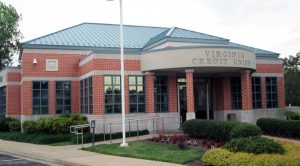Like last year, the local banking market began 2015 with the completion of a massive deal that helped set the tone for another year of consolidation and expansion by out-of-town competitors.
TowneBank sealed its deal to buy Franklin Federal Savings Bank as the calendar turned over to 2015. The Hampton Roads-based bank then set about beefing up its Richmond ranks by luring local talent in both banking and insurance. It also made a splash downtown by leasing a chunk of the city’s newest office tower for its Richmond headquarters.
From there the market continued to be flooded with competition from revenue-hungry banks from outside the area. First Tennessee Bank ramped up its local presence on West Broad Street; Bank of Lancaster opened its first two Richmond branches; its river country neighbor Chesapeake Bank arrived on Patterson Avenue, next door to a new outpost from North Carolina’s Park Sterling Bank.
So much competition poured in, it prompted some to question whether Richmond is “overbanked.” Things to watch in 2016 include whether consolidation will continue at the same rate or speed up, as many bankers have predicted for years.
Park Sterling didn’t stop with one new branch. The Charlotte-based bank announced a deal to acquire First Capital Bank in Glen Allen. It’ll give Park Sterling an instant foothold of eight local branches and helps it leapfrog several players in the local market share.
This year continued the streak of local banks’ recovery from the recession. Midlothian-based Bank of Virginia is one that has continued to bounce back, fueled in part by the launch of its new student loan arm, CordiaGrad. In its search for growth outside its home market, Bank of Virginia brought a veteran Virginia banker out of retirement to help with its “strategic growth.”
Still fighting off the dregs of the recession in 2015, Midlothian-based Village Bank was finally able to raise some sorely needed capital. It took in $14 million, much of which came from the same seasoned community bank investor from Northern Virginia who helped prop up First Capital and make it a more attractive target.
In the region’s southern half, a local bank’s former CFO was indicted and ultimately pleaded guilty in an embezzlement scheme. The bank was paid back in full, and the CFO was able to earn a suspended sentence to stay out of jail.
On the other side of the banking industry, local credit unions saw plenty of action in 2015. Virginia Credit Union, the area’s largest, absorbed a small institution in Charlottesville. VACU also announced the pending retirement of its longtime CEO Jane Watkins.
The credit unions for local firefighters and police officers merged their operations in the spring.
Call Federal Credit Union continued its long-term expansion plan by opening one new location and announcing plans for another.
The state lobbying arm for credit unions opened its shiny new downtown headquarters, which keeps its close the action at the General Assembly.
Like last year, the local banking market began 2015 with the completion of a massive deal that helped set the tone for another year of consolidation and expansion by out-of-town competitors.
TowneBank sealed its deal to buy Franklin Federal Savings Bank as the calendar turned over to 2015. The Hampton Roads-based bank then set about beefing up its Richmond ranks by luring local talent in both banking and insurance. It also made a splash downtown by leasing a chunk of the city’s newest office tower for its Richmond headquarters.
From there the market continued to be flooded with competition from revenue-hungry banks from outside the area. First Tennessee Bank ramped up its local presence on West Broad Street; Bank of Lancaster opened its first two Richmond branches; its river country neighbor Chesapeake Bank arrived on Patterson Avenue, next door to a new outpost from North Carolina’s Park Sterling Bank.
So much competition poured in, it prompted some to question whether Richmond is “overbanked.” Things to watch in 2016 include whether consolidation will continue at the same rate or speed up, as many bankers have predicted for years.
Park Sterling didn’t stop with one new branch. The Charlotte-based bank announced a deal to acquire First Capital Bank in Glen Allen. It’ll give Park Sterling an instant foothold of eight local branches and helps it leapfrog several players in the local market share.
This year continued the streak of local banks’ recovery from the recession. Midlothian-based Bank of Virginia is one that has continued to bounce back, fueled in part by the launch of its new student loan arm, CordiaGrad. In its search for growth outside its home market, Bank of Virginia brought a veteran Virginia banker out of retirement to help with its “strategic growth.”
Still fighting off the dregs of the recession in 2015, Midlothian-based Village Bank was finally able to raise some sorely needed capital. It took in $14 million, much of which came from the same seasoned community bank investor from Northern Virginia who helped prop up First Capital and make it a more attractive target.
In the region’s southern half, a local bank’s former CFO was indicted and ultimately pleaded guilty in an embezzlement scheme. The bank was paid back in full, and the CFO was able to earn a suspended sentence to stay out of jail.
On the other side of the banking industry, local credit unions saw plenty of action in 2015. Virginia Credit Union, the area’s largest, absorbed a small institution in Charlottesville. VACU also announced the pending retirement of its longtime CEO Jane Watkins.
The credit unions for local firefighters and police officers merged their operations in the spring.
Call Federal Credit Union continued its long-term expansion plan by opening one new location and announcing plans for another.
The state lobbying arm for credit unions opened its shiny new downtown headquarters, which keeps its close the action at the General Assembly.


